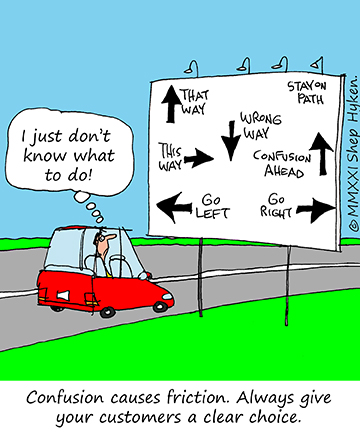Today’s customers are smarter than ever. They know how to buy. The digital/online world has given customers the power to research products, read reviews, and compare prices.

Often, customers have made up their minds about what they are going to buy before they ever leave their home or office. They are armed with knowledge and information, ready to talk to the salesperson and buy what they came for. Often, that works out well for everyone. The smarter customer can save the salesperson time and effort. That gives a smart salesperson the opportunity to confirm the customer is making a good decision, ethically upsell or cross-sell, and most importantly, build the relationship for the next time the customer needs whatever the company sells.
So, back to the idea that customers are smarter and know what they want. What happens if the customer finds a price online and then goes into a brick-and-mortar store to buy it? Does the store match the price? Sometimes. But what happens if the online price is from the brand’s own website, then the customer goes to the store and finds a higher price, and the store won’t match the online price? That actually happened … to me.
I was buying a ping-pong table. I researched online and found one I wanted from a store’s website. I drove to their brick-and-mortar location, just three miles from my home, and they refused to match the price, which was substantially lower online. The salesman said, “Sorry, they are actually a different company.” Really? Same name, same logo, same products, but different prices; and I couldn’t get them to budge. So, I went home and bought it online, with free shipping as well.
I just heard from Lisa Yetman, one of our Shepard Letter subscribers, with a similar example, but with a better outcome. She works at Barnes and Noble and she wrote: Up until about two years ago, the stores and online retail site were two different entities. Then it all changed a bit when we were given the green light to do price matching between these two retail departments. Now, if someone comes in to buy a book they saw on our website, we can access the online price through our register. If the price is lower, we are able to save our Guests some money.
I get why there are price differences. In my research about BN, I read a good explanation about why the prices might be different, and it had to do with the lower overhead of an online business. But even with that explanation, it’s hard to get a customer to understand that just because a company puts .com behind its name, it should be a different experience. Shop online at Best-Buy, Walmart, and other major retailers. They give you the option of picking an item up at the nearest store, having an online item shipped to the store, or having the item shipped directly to your home. And the prices are the same.
While the examples I shared were about pricing, there are many other ways to confuse customers. My point is that we should look at our processes, our products, and more. The best way to frustrate the customer is with inconsistency in any area of your business. Confused customers will never be loyal. Confusion erodes trust. A lack of trust will cost you sales. A lack of trust costs you repeat business and will never earn you loyalty. Avoid uncertainty. Avoid inconsistencies. Avoid confusion!
Related: Three Ways You Can Get To Know Your Clients Even Better


